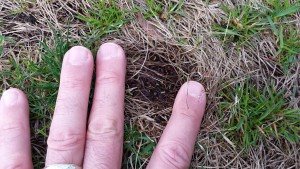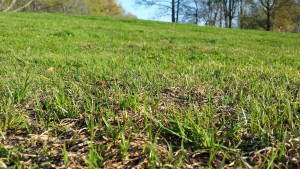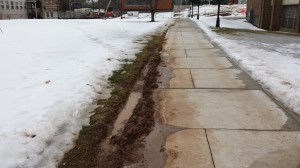Licensing for Mosquito Control – Category 8B
Killing Freezes… Finally
Many people are pleased that typical winter temperatures have taken so long to show up. Below are some interesting observations from early- to mid-winter in New Brunswick. Relatively warm soil temperatures (as high as mid-60s °F) stimulated growth late into December.
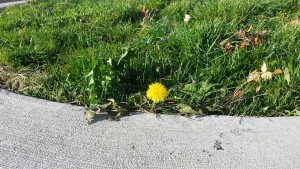 Dandelion bloom on 15 December 2015 in New Brunswick.
Dandelion bloom on 15 December 2015 in New Brunswick.
Kyllinga Awakens as Soil Temps Increase
Daily high soil temperatures at the 2-inch depth are consistently getting into the 60s°F. Yesterday, temperatures in sunny locations reached into the upper 60s. This means that the warm-season species are, or will be soon waking from winter slumber.
Looks Like Grass… But It Isn’t
Other than today and yesterday, soil temperatures in New Brunswick have been reaching into the lower 50s°F during the last week or so. And you see the effects, some plants are finally awakening from winter slumber. Cool-season turfgrasses are slowly greening up. Tree buds are swelling, some are flowering. Forsythia is just starting to bloom. And prostrate knotweed, one of the earliest germinating summer annual weeds, is emerging.
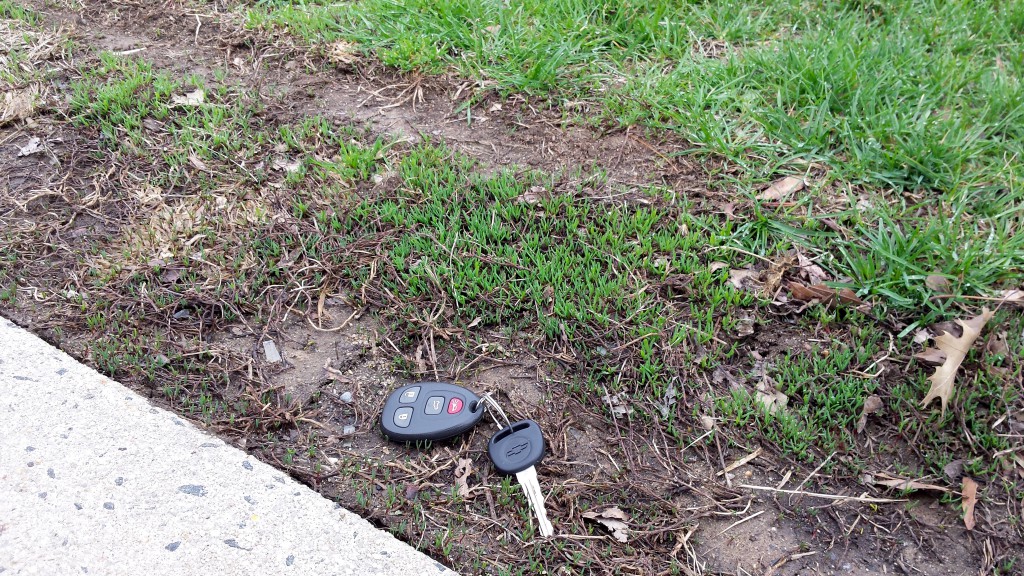
Some confuse the slender plants emerging along sidewalk edges at this time of year with grass but it is actually prostrate knotweed.
[Read more…]
Winterkill on Annual Bluegrass: Don’t Skip the K
We lost the ice cover on our Poa annua trials two weekends ago (March 7-8th) and initially the turf looked okay. But now… it doesn’t. And it will probably get worse, if we are reading the symptoms correctly.
Last Friday (March 13), my graduate student, Chas Schmid, informed me that I needed to look at his potassium trial on our Poa annua turf. There was a huge difference between no‑K and K fertilized plots. The no-K plots have steadily lost green color and become very blotchy. Plants taken from those plots are water-soaked and feel mushy when squeezed (How is that for a scientific description?). Dr. Lindsay Hoffman has a lot of experience with winterkill on Poa annua in Massachusetts and she is convinced that many of the plants are dead. And it smells like it – silage on a dairy farm!
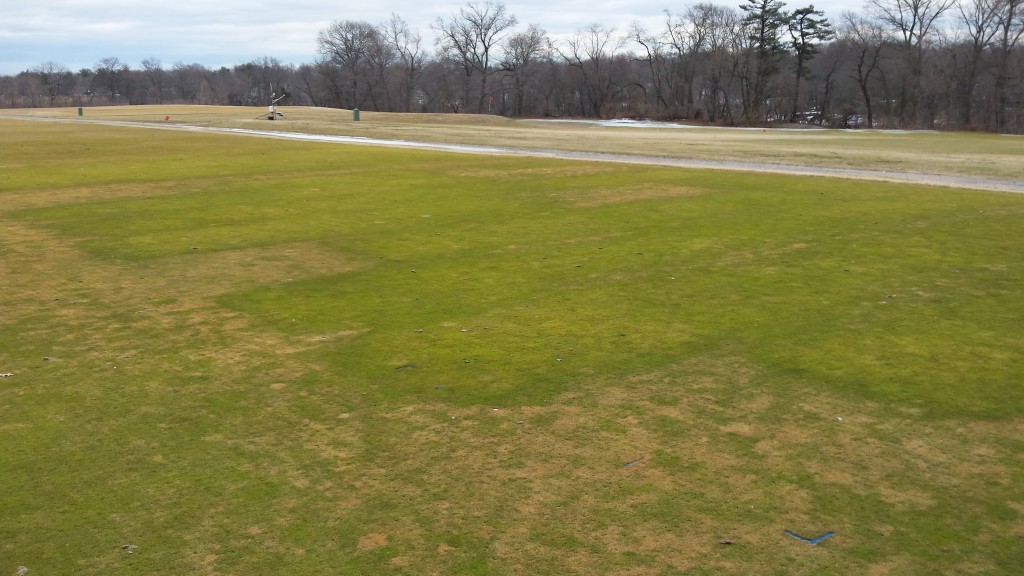
Blotchy, tan-colored plots and borders around this potassium trial are suffering from winterkill. Green, healthier looking turf received K fertilization; dying turf did not.
(15 March 2015)
Take home for me – don’t let your Poa annua turf become potassium deficient! Chas’ data for suppressing anthracnose severity indicates that a soil test (Mehlich 3) ≥50 ppm K and a tissue level of ≥2% K in the clippings are indicators that the K level is good. And winterkill in March 2015 hasn’t changed my mind about that data!
Looks like this might be the end of this Poa annua field. Dr. William Meyer said, “Good riddance.”
Traffic Alert: Damage Threat is High
Damage to landscapes from traffic can be severe during winter and especially now during the thaw. Soil conditions currently range from being frozen to partially thawed/frozen to thawed.
Partially frozen soil will be thawed and very wet at the surface while being frozen at some depth below. Under this condition, soil and turf will be extremely vulnerable to shearing and rutting damage. Traffic, even light foot traffic, must be withheld when this condition exists otherwise severe rutting (soil displacement) will occur.
